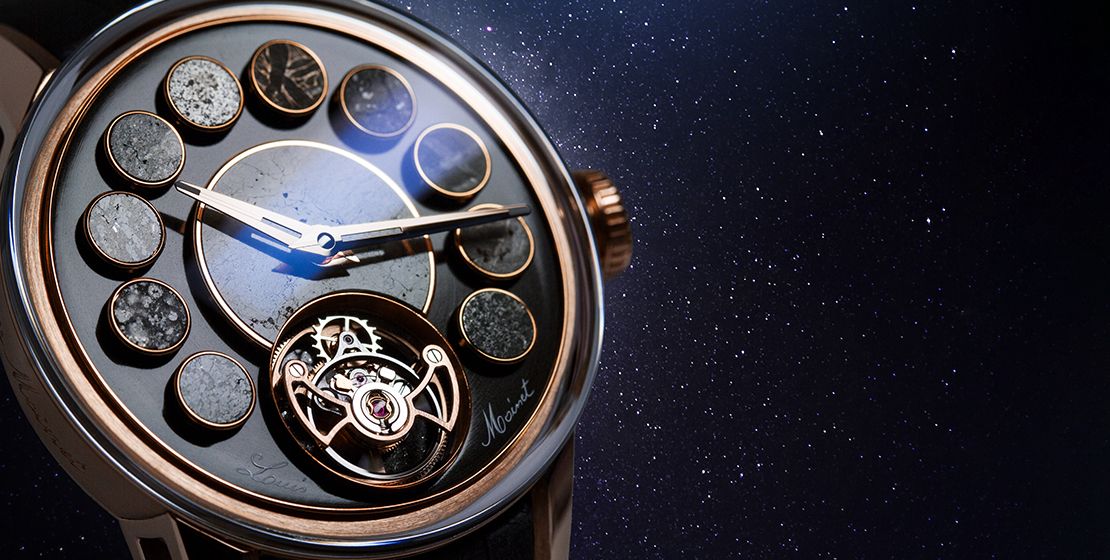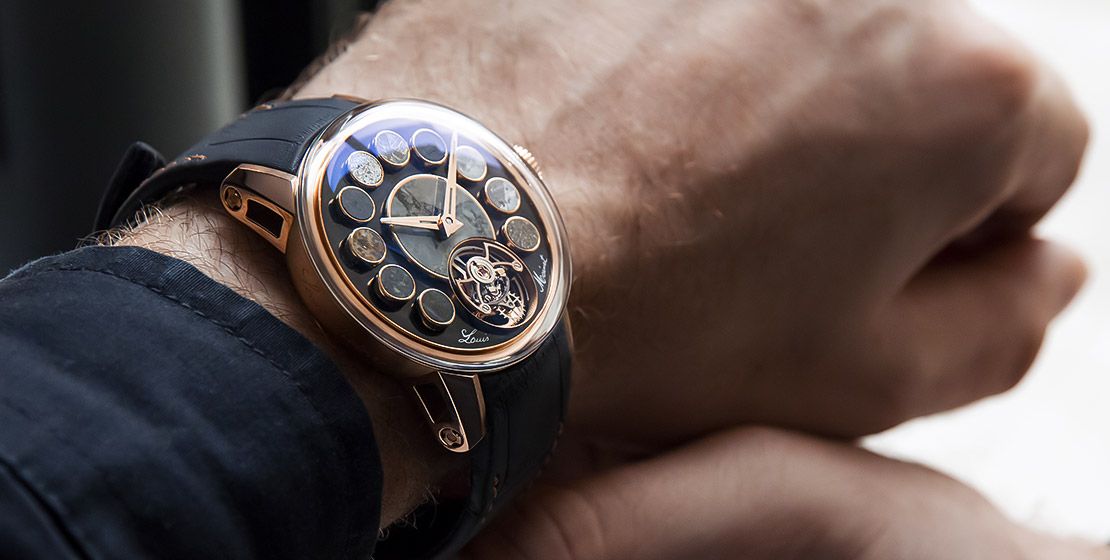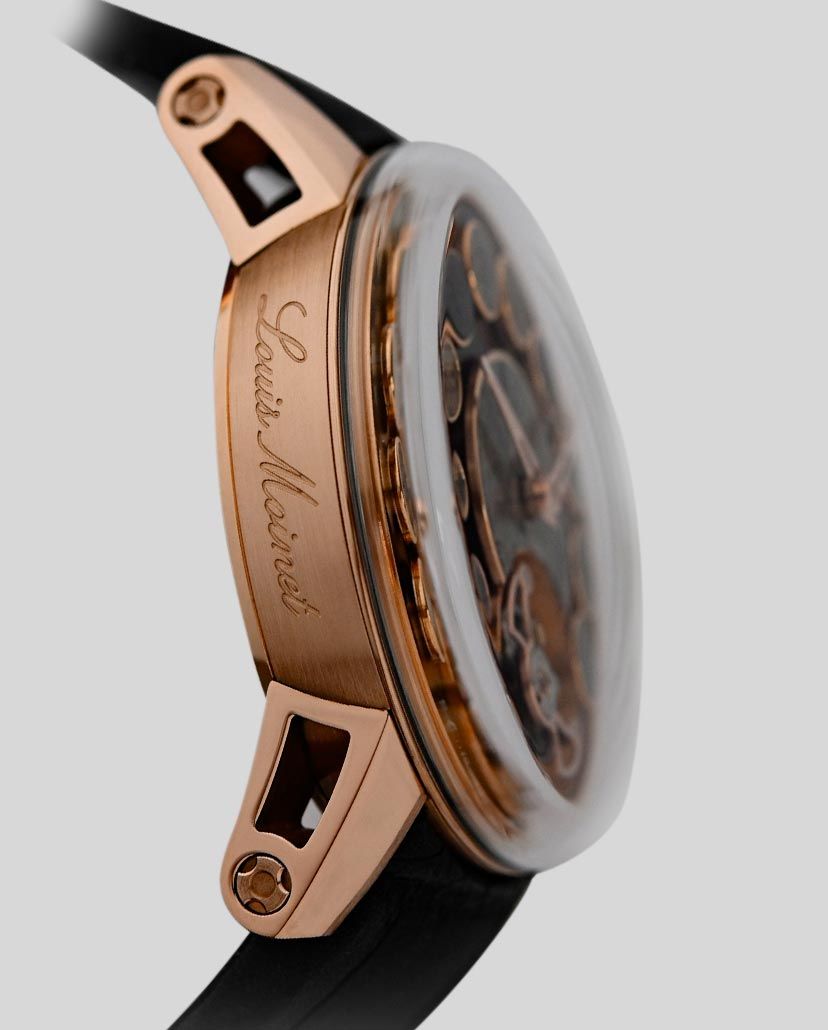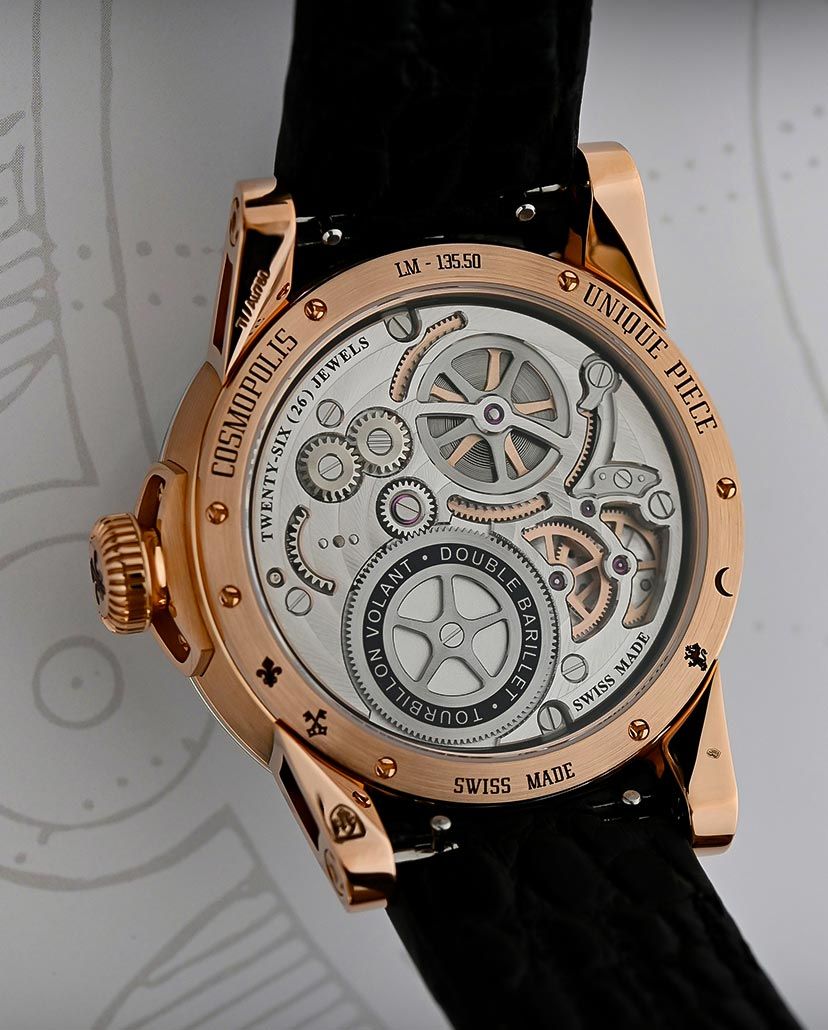FeatureLouis Moinet Cosmopolis Sets Guinness World Record For The Maximum Number Of Meteorite Fragments On A Watch Dial
The Louis Moinet Cosmopolis is an astronomical vision for its record-breaking number of diverse meteorite shards. The resultant imagery is reminiscent to the solar system with planetary bodies orbiting the sun or a constellation of celestial gems
May We Recommend
The term cosmopolis (city of the world) is a portmanteau of Greek words, kosmos (world) and polis (city). A world where diverse cultures coexist, their origin stories celebrated, and innate differences appreciated. Cosmos also represents the universe, its infinite galaxies, falling comets, supernovae, nebulas, planetary bodies, and other mysteries. Such thoughts coalesce on the new Louis Moinet Cosmopolis, embedding 12 meteorite shards from different cosmic collisions as the hour markers and the base of the hour and minute hands. The brand’s horological legacy showcases their longstanding fascination for outer space, which is evident from the integration of lunar and Martian meteorites into their many iterations. The brand have an existing Meteroite collection—with models such as Super Moon, Space One, Space Revolution, and Only India—featuring a meteorite shard on each of their dials. So does their ever-expanding Cosmic Art collection. The Louis Moinet Cosmopolis, however, has shattered conventional design norms for astronomical watches with a whopping one dozen shards of this interplanetary body. For this feat, on September 21, 2023, the Cosmopolis from les ateliers Louis Moinet has bagged the Guinness World Record for featuring the ‘most meteorite inserts in a watch’.
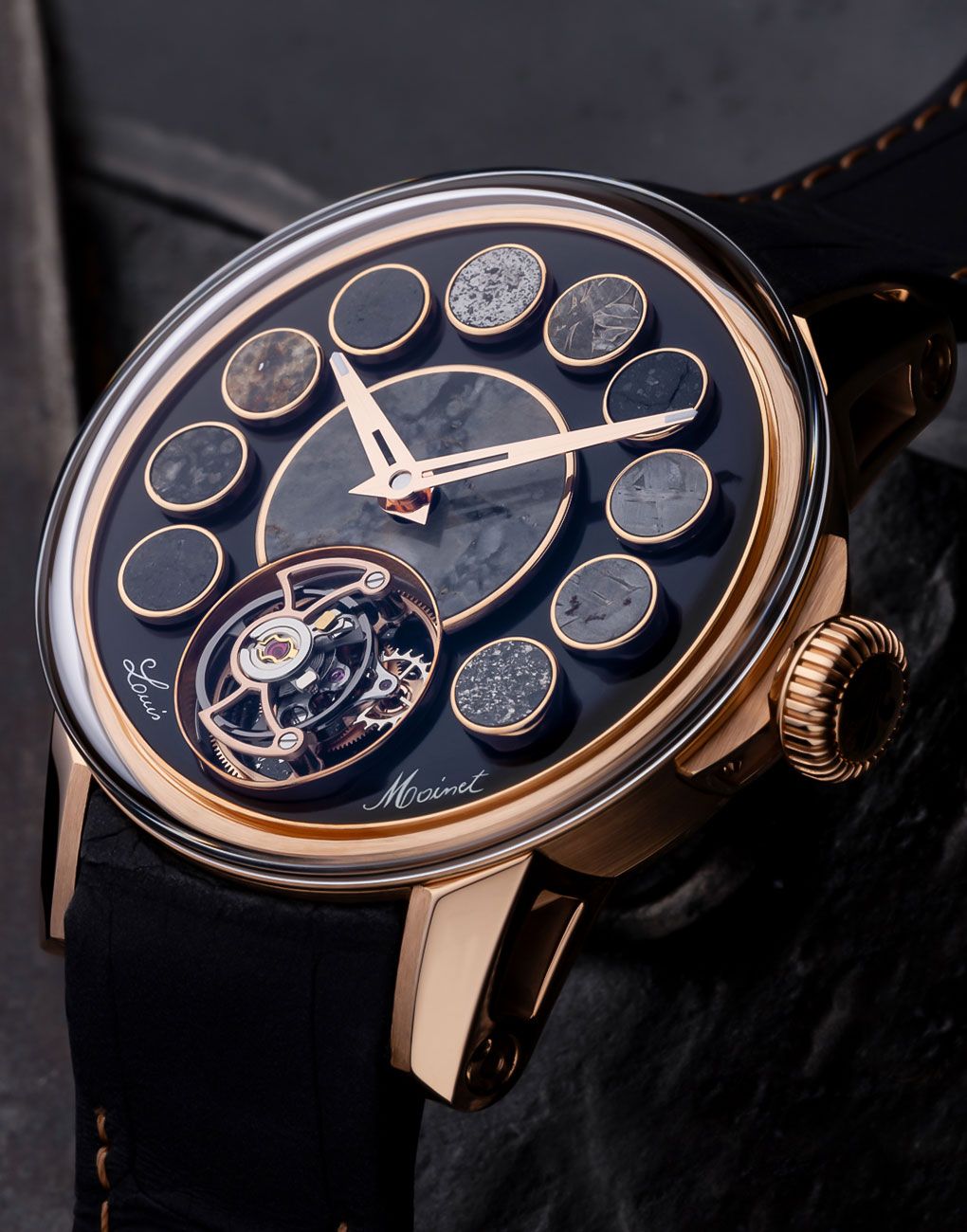
The Power Of 12 On The Cosmopolis
Each of the 12 meteorite shards has a fascinating origin story. Some are similarly hued, but upon close inspection, one would see that each is quite distinctive. Before elucidating construction details of the case and dial, a brief introduction of each meteorite piece is imperative.
Starting from the top, there’s the white-speckled lunar meteorite, Dhofar 461; one of the 300 specimens ejected 20 million years ago, a few orbiting the sun before turning into shooting stars and landing in Oman. Going clockwise, next, from the same terrain, is Dhofar 1674; a Martian meteorite discovered for its contrasting greenish tone against the desert sand. Around 4.567 billion years old, the Mexico-origin Allende meteorite is the oldest rock in the solar system nicknamed as the ‘Rosetta Stone’ for readily unravelling to geologists the many secrets of the Universe. The greenish-brown Erg Chech meteorite hails from a now extinct protoplanet that journeyed for over four billion years to reach the Earth in southern Algeria, landing one century ago. While little is known about the Jbilet Winselman meteorite from Morrocco, the fact that it contains amino acids proves that there are life forms in outer space. Forming an artsy specimen for its multi-layered structure is the Isheyevo meteorite, which is a carbonaceous chondrite discovered in Russia.
The seventh one is the Aletai Armanty meteorite—an iron and nickel mix found in China, weighing over 100 tonnes. Blessed with an adventurous backstory is the Aguas Zarcas meteorite—part of a meteorite shower that landed in a rainforest at central Costa Rica and discovered rather recently (April 23, 2019). Recognised for the unique Widmanstätten pattern—line markings on certain iron meteorites—is the Gibeon meteorite that landed in prehistoric Namibia. A conquistador’s discovery in 1776, the Toluca meteorite is among the Mexican roster of meteorites that locals used to develop metal tools for trade and agriculture. The Sahara 97093 meteorite was birthed during a supernova that ultimately landed in the Sahara Desert, and led to the formation of rare Enstatite EH3 meteorite micro-diamonds. Last on the list is another Sahara Desert find—the Black L5 chondrite meteorite, birthed from the clash of two asteroids. This specimen is partially veiled, positioned in the centre, with the six-o’clock flying tourbillion cage inset.
The Mind Of The Cosmopolis
With 10 spherical hour markers encircling the two-handed dial of the Louis Moinet Cosmopolis, the resultant imagery is reminiscent to the solar system with planetary bodies orbiting the sun or a constellation of celestial gems. The 40mm case cradling this dark grey brushed dial, the fluted crown, the lugs, the outline of each meteorite hour marker, and the dauphine-style hour and minute hands are made from 18-karat 5N rose-gold; an interesting contrast of stone-meets-metal.
A protective sapphire crystal dome seals the meteorites from external damage. Run on the manually-wound, in-house movement, the Louis Moinet Cosmopolis produces an impressive 96-hour power reserve because of the ‘volte-face’ position in which its two-barrel springs are placed: one upside down barrel over the other. The watch comes attached to a leather strap with contrast stitching.
Be it omens of good luck or every astrophile’s fantasy, the Louis Moinet Cosmopolis serenades for its interstellar design vocabulary and minimalistic approach to time-telling.



